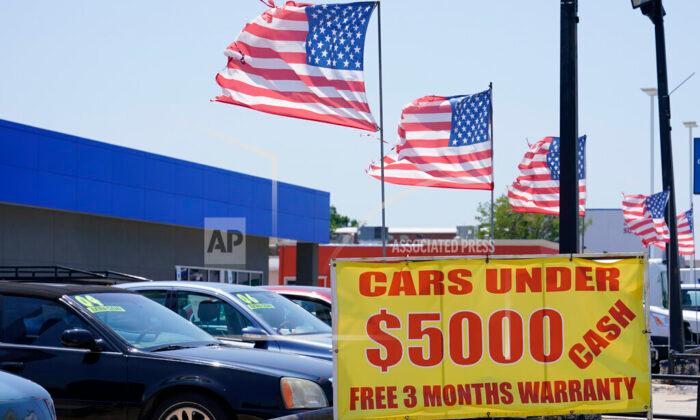Used car prices jumped unexpectedly in January, which suggests that inflation woes are not over for car buyers.
The news has the potential to squash optimistic predictions that inflation is heading downward, as the Federal Reserve continues to hike interest rates.
Used car prices have increasingly become a point of interest for investors and for the Biden administration as a barometer for measuring and easing inflation.
Used Cars Are a Leading Inflation Indicator
Used car prices are employed as a leading indicator in the Consumer Price Index (CPI), making up 4.5 percent of the survey.The recent drop in inflation has been largely driven by goods, leading central-bank officials to shift their focus onto the service sector.
The latest strong jobs report has led many analysts to reassess their outlook on future inflation.
Fed policymakers worry a tight labor market will keep upward pressure on wages and inflation.
Car Market Remains Volatile Since Pandemic
Used vehicle prices have risen since the start of the pandemic, as a combination of lockdowns, and supply chain issues caused the production of new vehicles to drop.The low supply of new vehicles and record-high purchasing costs, along with resilient demand, pushed consumers into the used vehicle market, leading to a price increase in that sector.
The Manheim index tracks the price of used vehicles sold at its U.S. wholesale auctions, which are often a bellwether for the new-car market.
The larger-than-expected increase in December 2022 was partially due to unseasonably high demand, according to Cox, and was the largest month-over-month increase since the 3.9 percent boost from October to November 2021.
Stephen Scherr, CEO of Hertz, said the company witnessed a big jump in prices over the past five weeks, both at auctions and in used cars sold at retail.
“The snap back over the last four weeks has been more pronounced,” Scherr said in an interview, noting “there is clear stability and more of an uptick.”Wholesale Car Prices Expected to Fall by End of the Year
The rebound in prices partially came from consumers returning to the market as prices eased from peak levels.Used-vehicle retail sales were up 16 percent in January over December 2022 and up 5 percent from a year ago, according to Manheim.
The used vehicle market had stabilized in January, close to pre-pandemic levels, with inventory remaining stable and prices dipping from their record highs, said Cox.
Consumer retail prices normally follow changes in wholesale prices.





